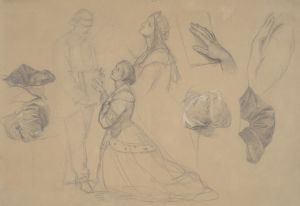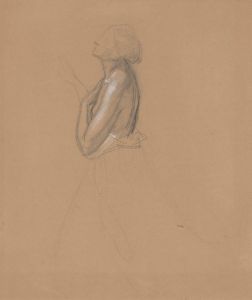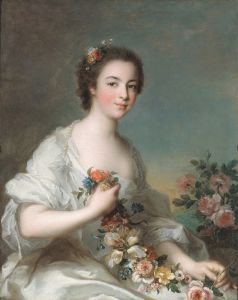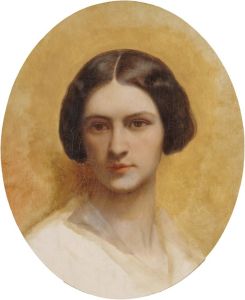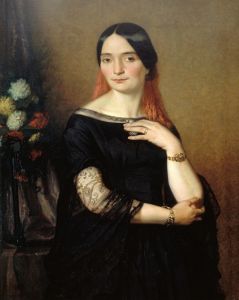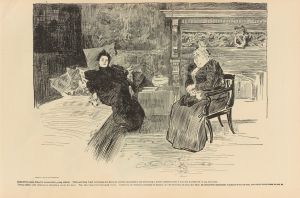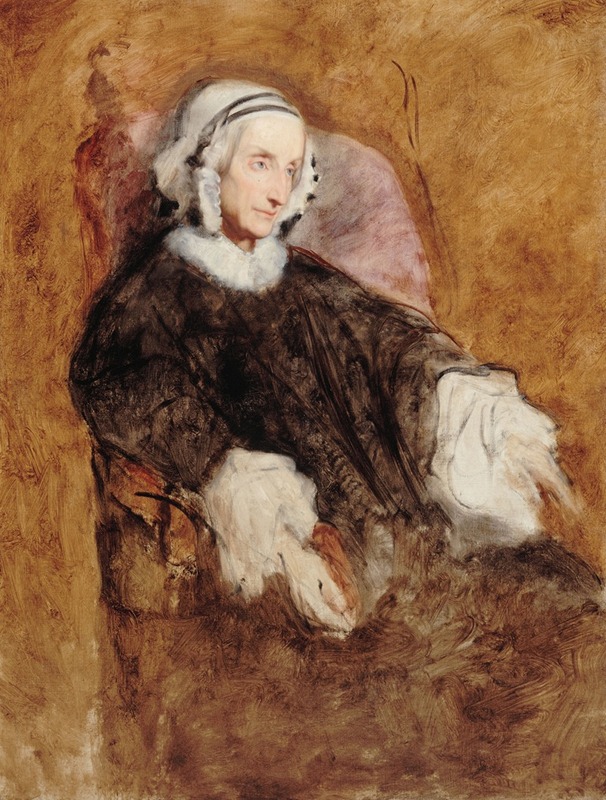
Portrait de la Reine Marie-Amélie en deuil
A hand-painted replica of Ary Scheffer’s masterpiece Portrait de la Reine Marie-Amélie en deuil, meticulously crafted by professional artists to capture the true essence of the original. Each piece is created with museum-quality canvas and rare mineral pigments, carefully painted by experienced artists with delicate brushstrokes and rich, layered colors to perfectly recreate the texture of the original artwork. Unlike machine-printed reproductions, this hand-painted version brings the painting to life, infused with the artist’s emotions and skill in every stroke. Whether for personal collection or home decoration, it instantly elevates the artistic atmosphere of any space.
Ary Scheffer's "Portrait de la Reine Marie-Amélie en deuil" is a notable 19th-century painting that captures the likeness of Queen Marie-Amélie of the French, who was the wife of King Louis-Philippe I. Scheffer, a prominent Dutch-French Romantic painter, was known for his portraits and historical scenes, and he had a close relationship with the French royal family, which is reflected in his numerous portraits of its members.
Marie-Amélie was born on April 26, 1782, in Caserta, Italy, as the daughter of Ferdinand I of the Two Sicilies and Maria Carolina of Austria. She became Queen of the French when her husband ascended the throne in 1830, following the July Revolution. Her reign as queen consort lasted until the abdication of Louis-Philippe in 1848, after which the couple went into exile in England.
The painting depicts Marie-Amélie in mourning attire, which is significant as it reflects the personal losses she endured throughout her life. The black dress and solemn expression convey a sense of dignity and resilience, characteristics that were often associated with her. The choice of mourning attire could be linked to the death of her son, Ferdinand Philippe, Duke of Orléans, in 1842, or other personal and political losses she experienced during her lifetime.
Scheffer's style in this portrait is typical of his approach to capturing the emotional depth and character of his subjects. He often employed a subdued color palette and focused on the facial expressions and posture of the sitter to convey their inner life. In this portrait, the use of light and shadow adds to the somber mood, highlighting the queen's contemplative gaze.
The relationship between Scheffer and the royal family was not merely professional; he was a close friend and confidant to several members, which allowed him to portray them with a level of intimacy and understanding that was rare for the time. This connection is evident in the sensitivity with which he approached the portrait of Marie-Amélie.
"Portrait de la Reine Marie-Amélie en deuil" is housed in the Musée de la Vie Romantique in Paris, which is fitting given Scheffer's association with the Romantic movement. The museum itself is dedicated to the Romantic era and houses a collection of works by Scheffer and his contemporaries, providing context for the artistic and cultural environment in which he worked.
The painting not only serves as a historical document of Marie-Amélie's life and status but also exemplifies Scheffer's skill in portraiture and his ability to convey the emotional states of his subjects. Through this work, viewers gain insight into the personal and political challenges faced by the queen during a turbulent period in French history.
Overall, Ary Scheffer's "Portrait de la Reine Marie-Amélie en deuil" remains an important piece within the canon of 19th-century portraiture, offering a glimpse into the life of a queen who navigated the complexities of her time with grace and fortitude.





